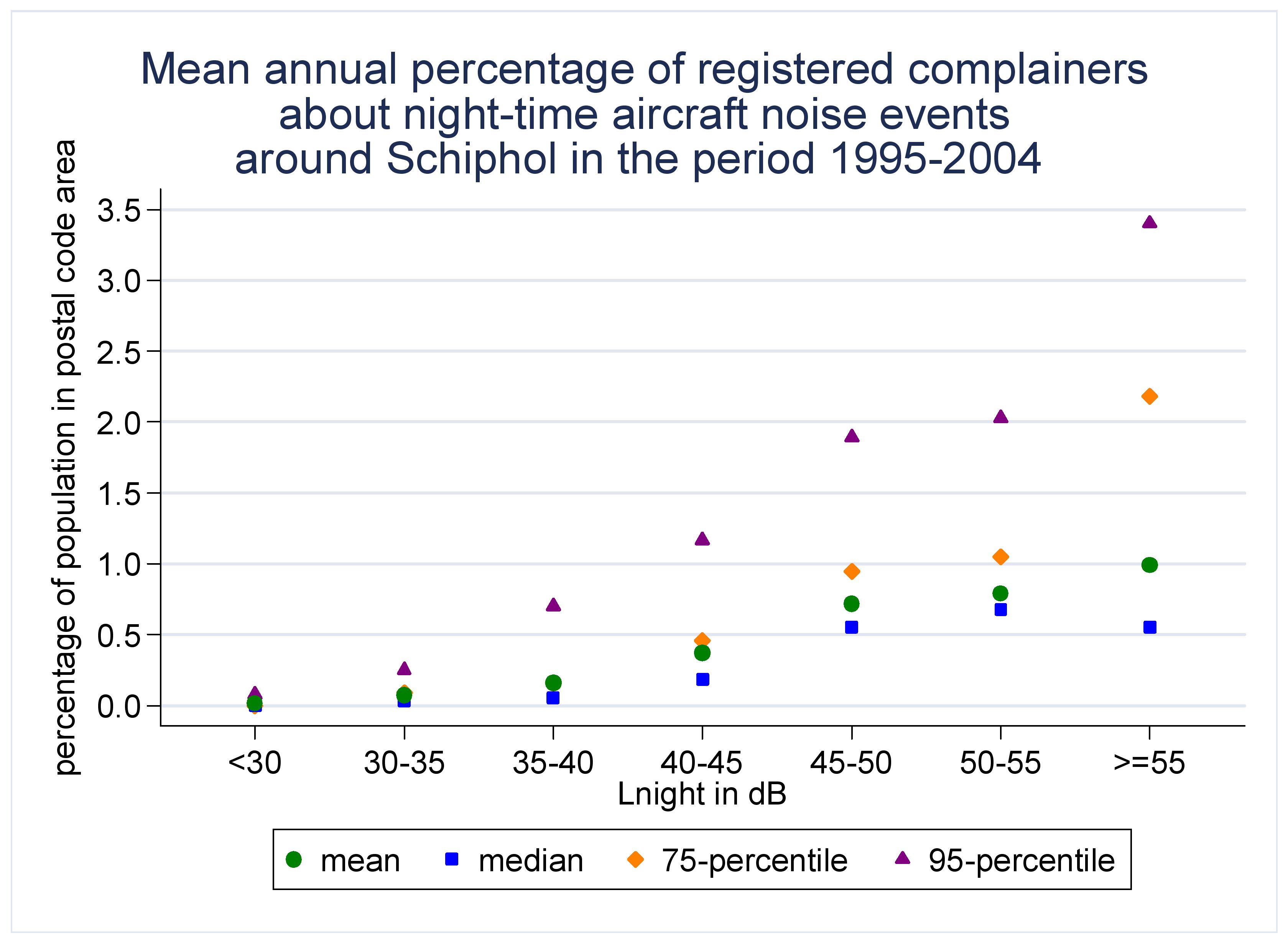Losely complaints may be defined as spontaneous expressions of
dissatisfaction. What is the connection between complaints, noise
and annoyance? That is still a matter of research, but things
become clearer now. See for instance the relationship
between number of flights, complaints, sleep disturbance and exposure to Lnight around Amsterdam
Airport. The data is derived from the complaint
register, and survey data by RIVM.

Notwithstanding the considerable increase in the number of night flights (reflecting the overall increase in airport use; the percentage of night flights - 6%- didn't change) the number of complaints and observed sleep disturbance decreased. The peak in 1997/1998 is due to the exceptional circumstance of closure of the main runway. This caused high use of runways less well placed with respect to the surroundings. The second peak in 2003 is due to the opening of a 5th runway which of course caused a major change in flight routing.
The absolute number of individual complaints is relatively high,
but that is more a sign of the efficient way the complaints are registered.
With
respect to the serious annoyed (over 500,000) the number of
complainers is not extraordinarily
(10.000 in area of 2 million people exposed).
Complaints cannot be related to maximum noise levels. It is very naive to suppose that people react to each and every noise event in proportion to their intensity. Instead, as percepted events increase they raise slowly anxiety levels, until at a certain moment the tension is released by telephoning or writing to the assumed culprit.

This figure shows that the number of complainers is related to the long term average Lnight. It is based on the several years of detailed complaints registration around Amsterdam aiport. In this example, night complaints start above levels of 35 Lnight (8 hr LAeq outside on the facade). Day complaints are less sensitive and start above 45 Lden.
Further analysis seems to indicate that insulation helps to attenuate the effects: at least people complain less as may be noted from the sharp decrease in complaint level when the percentage of insulated houses reaches 100%.



